Brachiopod |
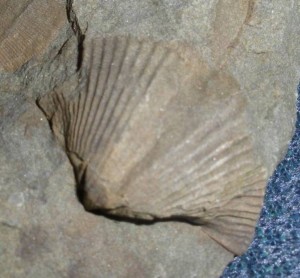 |
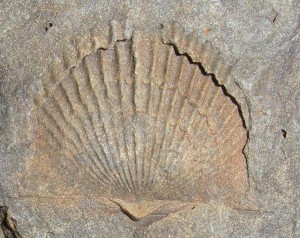 |
This organism is a filter feeder (they filter food particles out of the water) which is mostly not mobile. Most today tend to sit upon on a soft stalk attached to a hard surface such as another shell. In the Devonian, while many used such stalks, some seem to have simply sat on top of the mud. There were many kinds of brachiopods each with their own environmental preferences, some shallower and some deeper. Because, as a group, they are abundant in both shallower and deeper water, their abundance does not tell us clearly whether they were living in a deep or shallow water environment.
Since brachiopods are mostly not mobile and prefer firm sediment, they don’t do very well in sediment that is churned by mobile animals or in places where sediment may easily cover them. They would be more likely to be found in large numbers in an ocean with a firm floor.
Branching and EncrustingBryozoans |
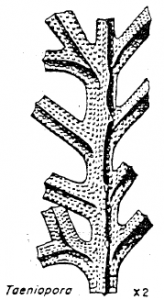 |
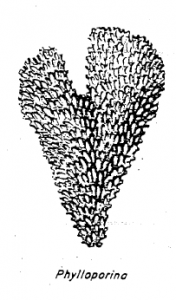 |
© Christopher McRoberts, State University of New York at Cortland
Bryozoans stay in one place and live in a colony like coral. The tiny individual animals living in the colonies are filter feeders, grabbing tiny bits of organic matter from water moving past. These zooids, however, are easily clogged by mud that might cover them. Most of the Devonian bryozoans were found in shallow moving water in reef-like environments.
Clam (Bivalve)
|
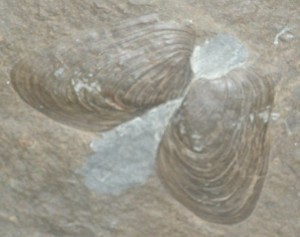 |
 |
Bivalves are filter feeders (they filter food particles out of the water). For our purposes we will use the term “clams” to refer to all bivalves (though many people use the term for a specific kind of bivalves that you can buy at the grocery store). Many clams use their foot to dig into soft sediments such as sand and mud, although some clams like “mussels” and “oysters” attach themselves to hard surfaces such as rocks and other shells. Like brachiopods, many kinds of clams in the Devonian existed in both shallower and deeper habitats, thus the total abundance of clams does not tell us directly about whether the environment was deep or shallow.
In the Devonian, clams did not exist in as many shapes and sizes or occupy as many ecological niches as they do later in geologic time; most in our samples were not as deep burrowing as many are today.
Clams sizes may vary with depth: in particular, clams living in shallower water with high wave energy may need either to be able to burrow deeply and quickly or have strong waver-resistant shells. By comparison with brachiopods, clams on average have a lot of soft body tissue relative to the size of their shells. Some are more mobile and have a higher metabolism. Thus they need somewhat more food than brachiopods to thrive.
Crinoid |
 © 1998 PaleontologicalResearch Institute © 1998 PaleontologicalResearch Institute |
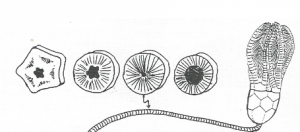 |
Crinoids are also known as “sea lilies” because of their appearance (a “head” with feathery tentacles on top of a “stem,” but they are not plants. Rather, they are related to starfish. Crinoids are filter feeders that generally needed a firm surface to attach to, thus they are more common in environments with a firm ocean floor.
Horn Coral
|
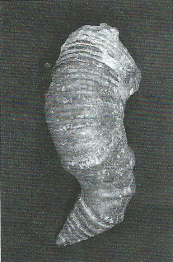 |
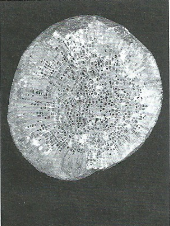 |
©2007 The Paleontological Research Institute
In the modern day, most corals live in clean shallow water (less than ~25m) in tropical and sub-tropical ocean environments. The coral shown here is a “solitary” coral, meaning that one animal lived in this skeleton; such corals, known popularly as “horn corals” because of their shape, are now extinct. Most corals today, and many others in the Devonian Period, were colonial, meaning that that thousands of tiny animals lived together and made the coral skeleton. Corals are filter feeders and sometimes predators, catching small prey with their tentacles. Corals are not mobile and need a hard surface to grow upon. They are usually not abundant where significant amounts of sediment in the water might cover their polyps. The presence of corals suggests that the water was likely shallow, clear, and warm.
Snail (Gastropod) |
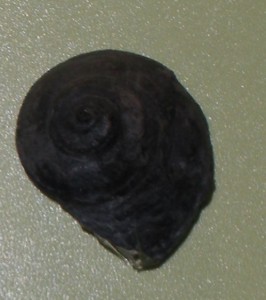 |
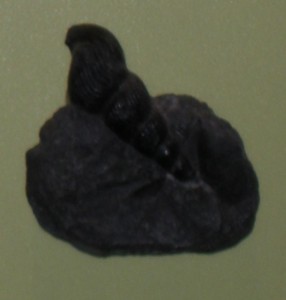 |
Many snails of the Devonian period scraped algae off the surface of rocks and or ate detritus (poop and other organic materials). They were most abundant in places where a lot of fecal and dead organic matter accumulated. They tended to be found in a bit deeper or quieter water environments where the finer grained organic matter settled to the bottom.
Straight Cephalopod |
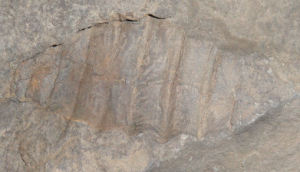 |
Devonian cephalopods did not live on the bottom of the ocean. Rather, they were swimming predators, with tentacles coming out of the wide part of their shells. They are relatives to modern octopuses and squid, and to the living Nautilus. Though they can be found across most environments in the marine fossil record because they were swimmers, they tend to concentrate near their food source in the shallower areas of a sea.
Trilobite (Head Tail or Ribs)or Trilobite (Whole) |
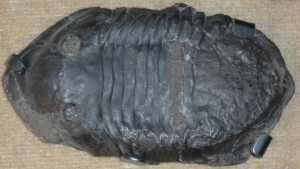 |
There are no species of trilobites that are currently alive, that is, they are “extinct.” Scientists think some hunted for worms and other organisms and some were likely deposit feeders (meaning they digested organic matter from eating sediment, somewhat similar to earthworms).
Abundant trilobites might suggest slightly deeper water, though since they were likely fairly mobile they could be found wherever their food sources were. Trilobites seem more abundant than they truly were because they molted (or shed their exoskeletons) in order to grow, thus any one animal left behind multiple exoskeletons.
